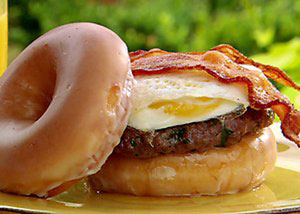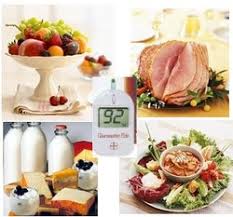Tips for Managing an 1800 Calorie Diabetic Diet Plan
One of the ways that you can help fight your diabetes is by sticking to an 1800 Calorie Diabetic Diet Plan. This number may sound scary or restrictive at first, but know that this Calorie count is higher than an active 30 year old male in good shape needs to maintain his body.
The main idea behind the 1800 calorie diabetic diet plan is that you need to get 1800 calories each day, which should be manageable by most Americans.
The reason why this ‘should’ be manageable is that 1800 is near to the standard diet plan for healthy living.
How the 1800 Calorie Diabetic Diet Plan Can Help You
This diabetic diet plan helps you to maintain normal blood sugar levels, and is designed so that you can lose some weight as well which is always a good thing! While on this diet it is also important that you try to keep active so that you can burn up any excess calories. Indoor and outdoor activities are highly encouraged, so lace up those shoes and get out for a bike ride, jog, walk, or other physical activity.
When you are following this plan it’s very important to avoid carbohydrate foods that have a high Glycemic Index (GI).
These bad foods include:
- Donuts
- Sweet syrup
- White rice
- Bagels
Instead, replace those bad foods with fruit and vegetables. It sounds bad at first, but once you rediscover how sweet and tasty an apple is, or how refreshing a raw, sweet pepper can be, it won’t take you too long to curb most of your sweet carb cravings.
Sample 1800 Calorie Diabetic Diet Plan
The first thing that you’ll likely ask yourself once you start to consider the 1800 Calorie Diet Plan is if you’ll actually have the will-power to stick with it. It sounds great on paper, but reality is where we need to live, and it’s here that we also face the toughest challenges.
Three big keys here that I’ve found have worked wonders for myself:
- Learn the simple rules that you need to follow to live within the Calorie budget of the diet eg: how much protein, vegetables, etc make up each meal. Once you know this you can start to improvise easily.
- Learn how to cook food that you like to eat. If you don’t enjoy eating it, it’s highly unlikely that you’ll stick with this diet for any length of time.
- Learn how you can cook in batches to save time. This was a big one for myself, because I look at time in the kitchen as ‘wasted time.’ To get over this lie that I tell myself (because time in the kitchen is never really wasted) what I did was cooked larger portions of food, so that I would have several meals that I could put into the fridge, reheat, and eat them quickly.This was also important because on those days when I was feeling lazy and didn’t want to cook, the meals were already prepared in the fridge waiting for me!
Here’s a sample plan that you can follow:
Breakfast:
A good diabetic breakfast idea is to have a large banana with a cup of skim milk, along with one and a half cup of bran cereal and a tablespoon of cream cheese.
Lunch:
For lunch, simply have an ounce of low fat Colby cheese, ½ cup of mild salsa, 2 ounces of baked nacho chips, 2 ounces of ground turkey, along with 2 cups of chopped lettuce.
Dinner:
Dinner may consist of two thirds of a cup of brown rice with salmon, a teaspoon of olive oil, ½ cup of cooked carrots, 1 cup of skim milk and three quarters of a cup of pineapple for dessert.
So don’t be afraid to get creative when designing your 1800 Calorie Diabetic Diet Plan so that you can enjoy keeping your body healthy and fit and your blood sugar levels down!




 The main goal of a diabetic diet is to
The main goal of a diabetic diet is to 
